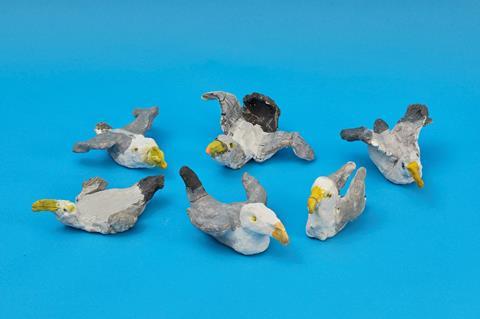Pupils from 40 primary schools across the UK took part in the annual Take One Picture exhibition, taking inspiration from Claude-Joseph Vernet’s A Shipwreck in Stormy Seas.

From now until October, the National Gallery in London will showcase the children’s artworks ranging from crashing waves and voyaging ships to tea-stained diaries and dramatic dance performances.
About the Take One Picture project
Each year primary schools are invited to focus on one of the National Gallery’s paintings and respond creatively, following the children’s questions and ideas. The programme aims to put art at the centre of children’s learning across the curriculum, inspiring a lifelong connection with artists’ work and with museums and galleries.
“This exhibition illustrates the power of children’s ideas and creativity, and how they can help us all to think more deeply about the paintings in the collection, but also about our lives and the lives of others.”
Karen Eslea, head of learning and national programmes at the National Gallery
This year (the 28th of the project) the Gallery consulted with teachers to choose the focus painting, and selected A Shipwreck in Stormy Seas (1773) by Claude-Joseph Vernet. Originally known as ‘Tempête’ (Storm), this painting is one of a pair of seascapes. It shows a rocky shoreline buffeted by a violent sea storm. Two ships roll in the giant swell, sails tied down, or tattered by the turbulent winds and lashing rain.

How children interpreted the painting
Year 3 students at Icknield Primary School, Luton, wondered why the captain of the ship had not checked the forecast before they set sail. After learning that the weather was difficult to predict in the 1700s, they discussed how and why we check the forecast today, and how weather can be measured.
The class then designed their own weather station and recorded the weather over the next week, including levels of wind and rain.
After working on their project, one Year 6 student at Mab’s Cross Community Primary School, Wigan, said: “All you have to do is open your eyes and the whole world is around you. Now I know all the features of a coast when I next see them. I’ve learned that no matter your art skill, you can still make a masterpiece.”

The class had wanted to know where the painting was set, but they learned that it was actually made up from many places Vernet had visited. They discussed the features of coastal places they had been, before designing and making maps for their own imaginary islands.
Many projects addressed the dangers of travelling by sea, thinking about what could cause a shipwreck and the terrifying experience of the people on board. This led one school to learn about water safety with the Royal National Lifeboat Institution. Some classes imagined what cargo might be lost at sea, including goods produced by enslaved people.
“I’ve learned that no matter your art skill, you can still make a masterpiece.”
Year 6 student, Mab’s Cross Community Primary School, Wigan
The project also encouraged many children to visit their own local beaches, collecting objects and taking photographs to include in their artworks. These visits highlighted the problem of plastic pollution in our seas and inspired children to use recycled materials.

Karen Eslea, head of learning and national programmes at the National Gallery, said: “These children are young artists who explore the world, and their own learning, through looking very carefully at one painting. Asking questions and investigating with others in their own community and beyond helps them to develop creative ways in which to respond.
“This exhibition illustrates the power of children’s ideas and creativity, and how they can help us all to think more deeply about the paintings in the collection, but also about our lives and the lives of others. Thank you to all the inspiring children and teachers who have taken part this year.”
More information about the programme, related CPD courses for teachers, and the annual Take One Picture exhibition at the National Gallery can be found at nationalgallery.org.uk/take-one-picture










